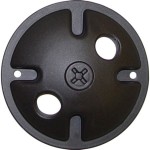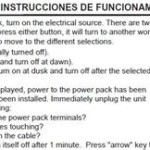Essential Aspects of Outdoor Can Light
When it comes to illuminating your outdoor space, can lights offer a versatile and stylish solution. These compact fixtures can be installed in various locations, from decks and patios to walkways and gardens. Understanding the essential aspects of outdoor can lights is crucial to make an informed decision for your specific needs.
1. Fixture Design:
Outdoor can lights come in different designs to complement various architectural styles. Choose from flush-mount, semi-flush mount, or adjustable fixtures. Flush-mount lights sit flush with the ceiling for a streamlined look, while semi-flush mount lights extend slightly downward for increased light distribution. Adjustable lights provide flexibility in directing the light beam.
2. Material and Durability:
Outdoor can lights face harsh elements like rain, snow, and UV rays. Opt for fixtures made of weather-resistant materials like stainless steel, aluminum, or resin. These materials can withstand extreme temperatures, moisture, and corrosion for long-lasting performance.
3. Light Source:
LED (Light-Emitting Diode) bulbs are highly recommended for outdoor can lights due to their energy efficiency, long lifespan, and durability. LEDs produce bright, even illumination while consuming minimal power. They are also dimmable, allowing you to adjust the light output as needed.
4. Finish and Color Temperature:
The finish of your outdoor can lights should complement the décor of your outdoor space. Choose from classic black, white, bronze, or brushed nickel finishes. Consider the color temperature of the light source. Warm white (2700-3000K) creates a cozy and inviting ambiance, while cool white (4000-5000K) provides brighter and more focused illumination.
5. Beam Angle and Spread:
The beam angle of your outdoor can lights determines the width of the light beam. A wider beam angle (e.g., 90 degrees) provides general illumination, while a narrower beam angle (e.g., 30 degrees) creates a more focused spotlight effect. Consider the size of your outdoor space and the desired lighting effect when selecting the beam angle.
6. Wattage and Brightness:
The wattage of your outdoor can lights determines their brightness. Choose a wattage that provides adequate illumination without overpowering your space. LED bulbs are more energy-efficient than traditional incandescent bulbs, so you can achieve similar brightness with a lower wattage.
7. Installation:
Outdoor can lights require proper installation to ensure safety and optimal performance. If you are not comfortable with electrical work, it is advisable to hire a qualified electrician. Follow the manufacturer's instructions carefully and ensure the fixtures are securely fastened and weatherproofed.
8. Maintenance and Cleaning:
Like any outdoor fixture, outdoor can lights require occasional cleaning and maintenance. Regularly wipe them down with a soft cloth to remove dirt and debris. Check the bulbs periodically and replace them when necessary. Inspect the fixtures for any signs of damage or corrosion and address any issues promptly.

Recessed Led Down Lighting Outdoor Indoor Lights

8 Outdoor Recessed Lighting Ideas For Your Porch Flip The Switch

Guide To Choosing The Right Recessed Light Fixtures For Your Home Exterior

Guide To Choosing The Right Recessed Light Fixtures For Your Home Exterior

Outdoor Recessed Lighting Exterior Light Fixtures Lights

In Outdoor Recessed Lighting Pics Exterior Design Rustic

Waterproof Recessed Led Downlight 40 Watt Equivalent 400 Lumens Super Bright Leds

Didn T Get Them Installed While Your Home Was Being Built You Still Can These Recessed Lights W Outdoor Lighting Exterior

Tin Can Diy Outdoor Lighting Tutorial You Do This The Heathered Nest

Outdoor Recessed Lighting Soffit Delmarfans Com







